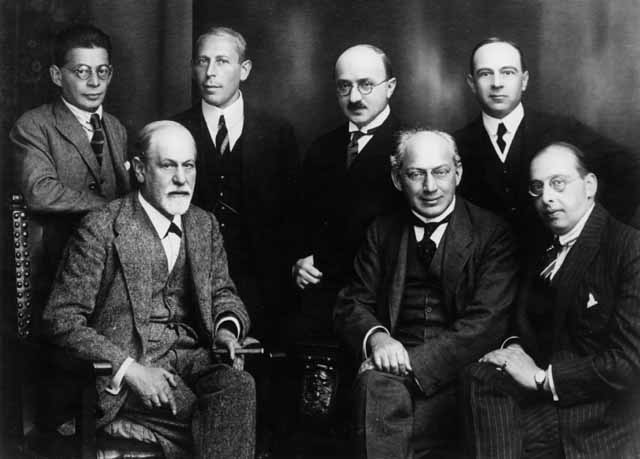October 15, 2017: Every business with a social media presence wants to create content that’s widely shared. Each year, big brands spend millions of dollars on “viral marketing” experts whose jobs are to create edgy, viral campaigns, the vast majority of which flop instead of soaring. “Viral marketing specialists” lurk by the dozens on sites such as Upwork.com and Fiverr.com, hoping to score projects with small businesses seeking greater content virality. Others write books, give lectures, and bestow “viral content secrets” to those willing to pay to learn them.
The truth is that there’s no “secret” to creating sharable content. There are, however, some reliable principles — many derived from psychology — that you can employ to maximize the chance that your content will be passed from one social media user to another.
The Role of Emotion
Dr. Allison Kahner, a Scarsdale, NY-based Clinical Psychologist, believes that Ludwig Wittgenstein’s famous observation that “words are like the film on deep water” applies directly to the problem of viral content marketing. “The messaging that people receive on social media is rarely examined beyond its overt form, in other words, its surface appearance as text, images, and the particular juxtaposition of those elements generating its conscious meaning to any particular recipient. The far more interesting question is to examine how successful viral content engages our subconscious through the mechanism of emotion – our “gut,” not just our conscious mind.”
This powerful link between emotion and viral sharing was recently validated by two Wharton School researchers, Jonah Berger and Katherine L. Milkman, who in 2011 conducted a controlled study to specifically examine the role emotion plays in shaping the social transmission of Web-based content. For three months, they studied the articles on the New York Times site that were passed around most often via e-mail and social posts. Some 7,000 articles were examined, and the tips below owe much to their original research in the psychology of viral content marketing.
Make it happy. Content that’s either happy or “feel good” is much more likely to be passed around than content that makes people sad, concerned, or depressed. Social media is an environment that thrives largely on positivity. People that feel positively about the content of your post will be more inclined to take action than those viewing a sad or depressing post (because who in the world wants to be known as a source of sadness?).
Make it awesome. Social media content that creates a sense of “awe” (for example, a truly mind-bending statistic or incredible image from science or the arts) are highly share-worthy. People enjoy passing around content that establishes themselves as purveyors of unconventional, novel, and mind-bending experiences. The state of “awe” is one that is highly conducive to pressing on the “send,” “forward,” or “retweet” buttons.
Make it fearsome. Fear is another fundamental emotional basis of shareworthy content across many sites and channels. Anxiety generates interest and also the possibility of agency on the part of the message recipient in terms of personally taking steps to counter the feared event (perhaps by contributing money via a crowd-sourced funding site or by signing an online petition). Fear is a high-activation state governed by the amygdala (otherwise known as “the reptilian brain”), and there is some evidence that the simple act of sharing decreases the instantaneous level of anxiety experienced by the initial reader of the post.
Make it angry. Like social media content that activates fear in the mind of the recipient, posts that identify some wrong to be righted in the world or in a local community have a good chance of being passed on. Anger, like fear, is a “hot” emotion that is more likely to get someone to press the “forward” button than content that’s cooler, more contemplative, or more nuanced. (Many online sites, including Daily Kos and Newsmax, are masters at creating this kind of viral content).
Make it surprising. Surprise is one of the reasons why sites like Buzzfeed, Daily Dot, and Upworthy are able to stay at the top of the content game. Surprising content is shared because people view the emotion of surprise as a “gift” to be shared. (A credible claim can be made that that our entire society has, thanks to Twitter, Facebook, and Google, become completely addicted to the experience of being continually surprised by unexpected events).
Make it useful. “How to” content will be passed along provided that it isn’t derivative or so obvious that the viewer’s internal emotional reaction is “ho-hum.” Think about the problems that your audience is facing, and develop content that’s truly useful. Even better, poll your audience on issues that are vexing to them, and develop content based on their concerns. While the emotional valence (intensity) of “how to” content is much lower than content designed to generate fear, shock, or surprise, it’s less likely to cause the kind of negative blowback that can arise when a viral campaign mistakenly pushes the wrong emotional buttons (for example, by publishing content intended to be “happy” which inadvertently causes anger, shock, or fear).
- 10 Mistakes to Avoid When Using QR Codes for Marketing - September 20, 2023
- Kevin Lee on How AI Changes the SEO Landscape - August 31, 2023
- The Power of Compound Marketing: Kevin Lee Presents @ 1MediaWorld 2023 Global Conference - March 7, 2023

